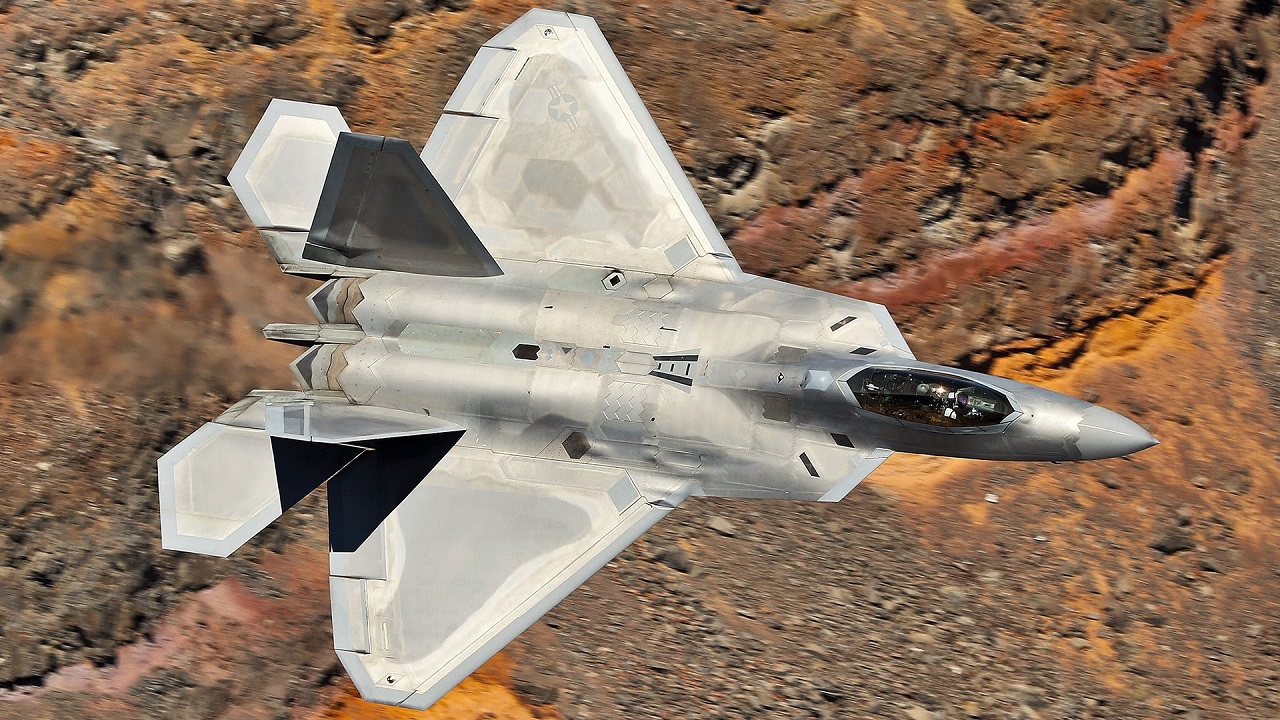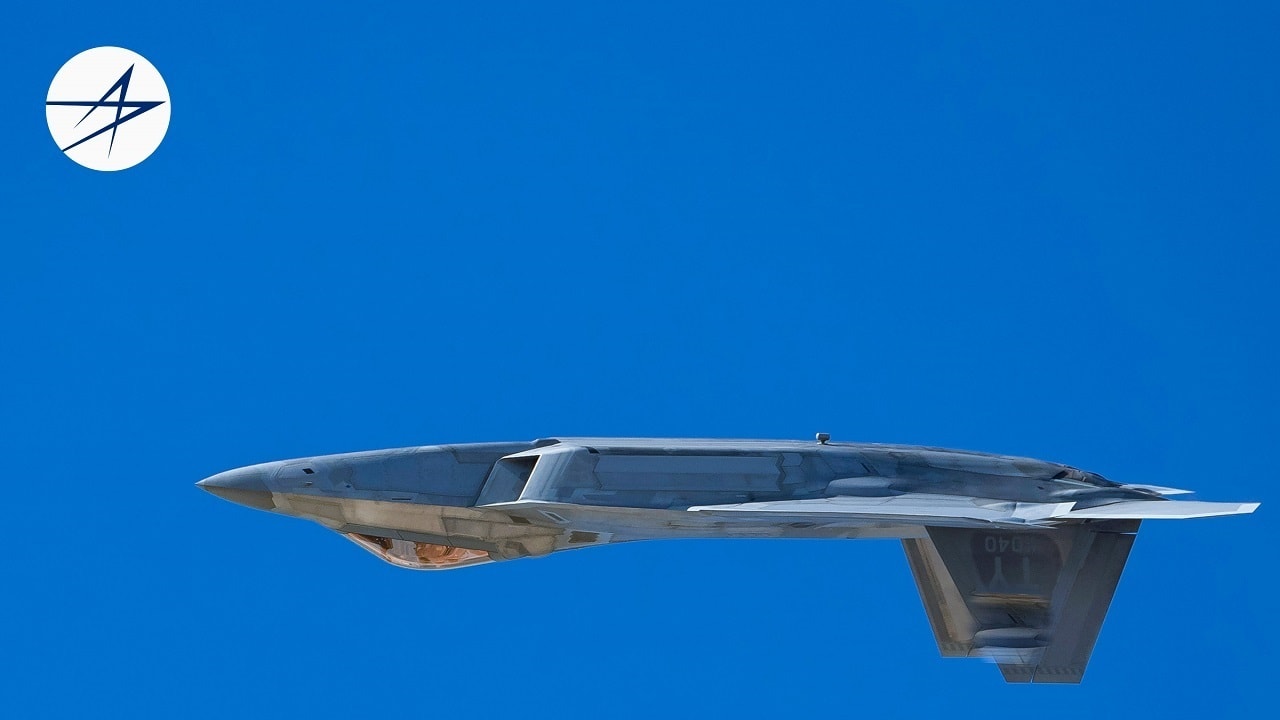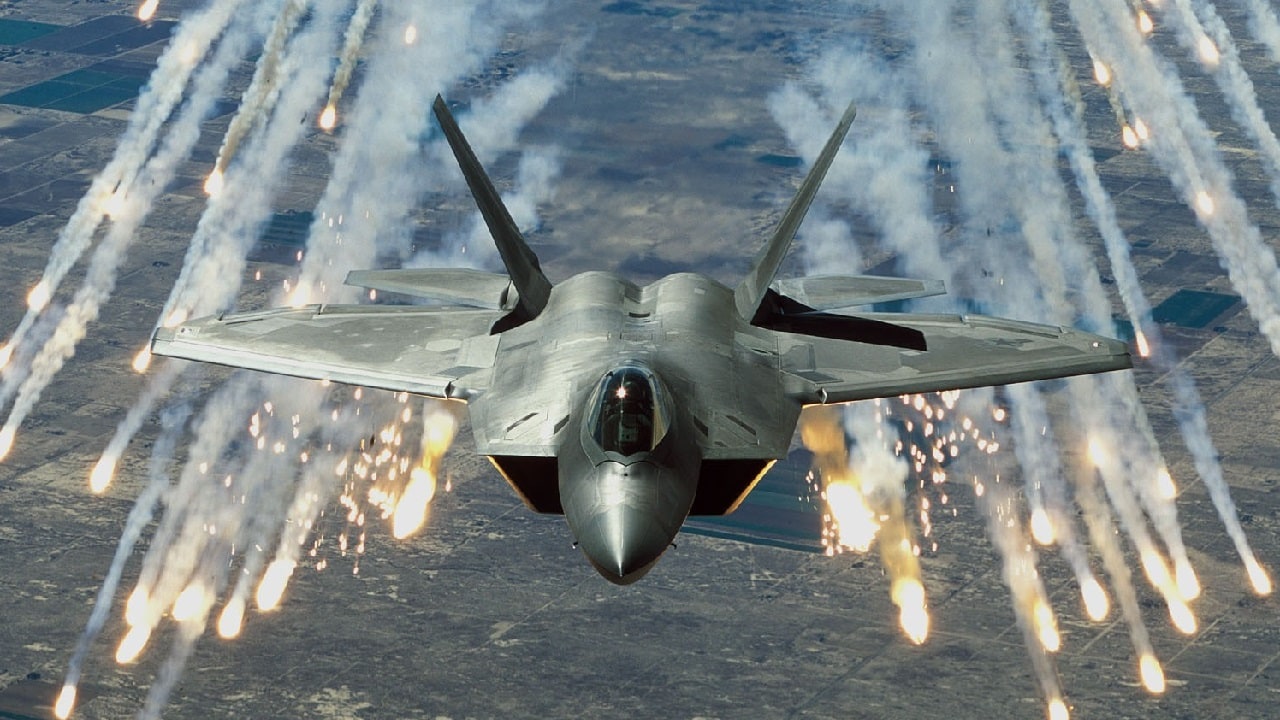As a fifth-generation stealth fighter, the F-22 is specifically engineered for air supremacy and air dominance missions, meaning its radar-evading technology is designed to elude and destroy enemy air defenses.
The aircraft is also configured to function as the world’s premier air-to-air fighter able to “dogfight” and readily destroy enemy aircraft.
Behind the Wheel
The F-22’s command and control sensors and avionics help other coalition aircraft identify and destroy targets. While some of the aircraft’s technologies are not “publically discussable,” Air Force F-22 pilots and weapons developers say that the F-22’s active and passive sensors allow it to function as an “aerial quarterback” allowing the mission to unfold.
For example, drawing upon information from a ground-based command and control center or nearby surveillance plane – such as a Joint Surveillance and Target Attack Radar System (JSTARS) – the F-22 can receive information or target coordinates from nearby drones.
At the moment, targeting information from drones is relayed from the ground station back up to an F-22.
However, computer algorithms and technology are evolving such that aircraft like an F-22 will soon be able to quickly view drone video feeds in the cockpit without needing a ground station – and eventually be able to control nearby drones from the air.
The F-22 is known for a range of technologies including an ability called “supercruise,” which enables the fighter to reach speeds of Mach 1.5 without needing to turn on its afterburners. This increases the jet’s operating envelope in terms of both speed and range, giving it an advantage over other fighters.
F-22 Weapons
The fighter jet fires a 20mm cannon and has the ability to carry and fire all the air-to-air and air-to-ground weapons including precision-guided ground bombs such Joint Direct Attack Munitions (JDAM) called the GBU 32 and GBU 39.
In the air-to-air configuration, the Raptor carries six AIM-120 AMRAAMs and two AIM-9 Sidewinders.
F-22 pilots say the aircraft possesses a sophisticated sensor suite allowing the pilot to track, identify, shoot, and kill air-to-air threats before being detected. Significant advances in cockpit design and sensor fusion improve the pilot’s situational awareness.


F-22 Raptor as depicted on a Tweet from Lockheed Martin.

Air Force weapons developers also use what’s called a radar-warning receiver – a technology that uses an updatable database called “mission data files” to recognize a wide-range of enemy fighters,
Made by Lockheed Martin and Boeing, the F-22 uses two Pratt & Whitney F119-PW-100 turbofan engines with afterburners and two-dimensional thrust vectoring nozzles, an Air Force statement said. It is 16 feet tall, 62 feet long, and weighs 43,340 pounds.
Its maximum take-off weight is 83,500 pounds.
The Air Force’s stealthy F-22 Raptor fighter jet delivered some of the first strikes in the U.S.-led attacks on the Islamic State in Iraq and Syria when aerial bombing began in 2014.
After delivering some of the first strikes in the U.S. Coalition-led military action against ISIS, the F-22 began to shift its focus from an air-dominance mission to one more focused on supporting attacks on the ground.
About the Author
Kris Osborn is the Military Affairs Editor of 19FortyFive and President of Warrior Maven – Center for Military Modernization. Osborn previously served at the Pentagon as a Highly Qualified Expert with the Office of the Assistant Secretary of the Army—Acquisition, Logistics & Technology. Osborn has also worked as an anchor and on-air military specialist at national TV networks. He has appeared as a guest military expert on Fox News, MSNBC, The Military Channel, and The History Channel. He also has a Masters Degree in Comparative Literature from Columbia University.

